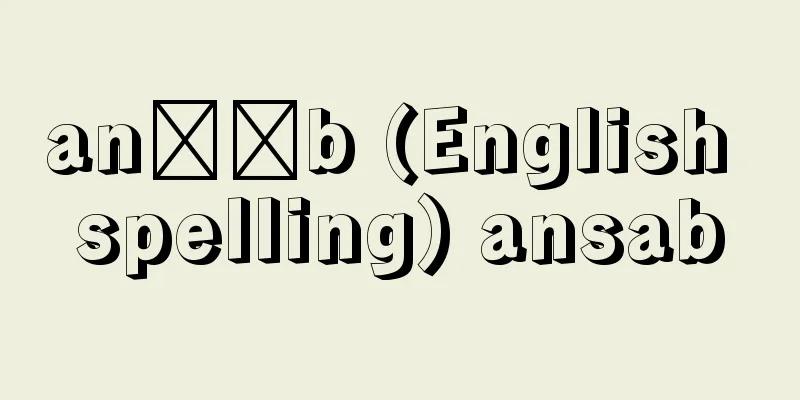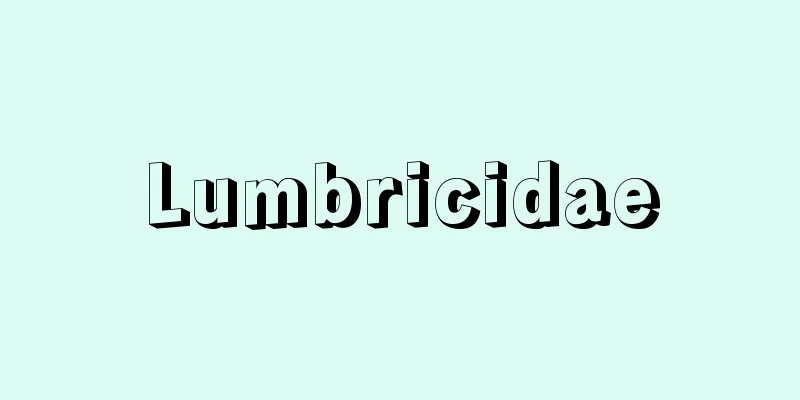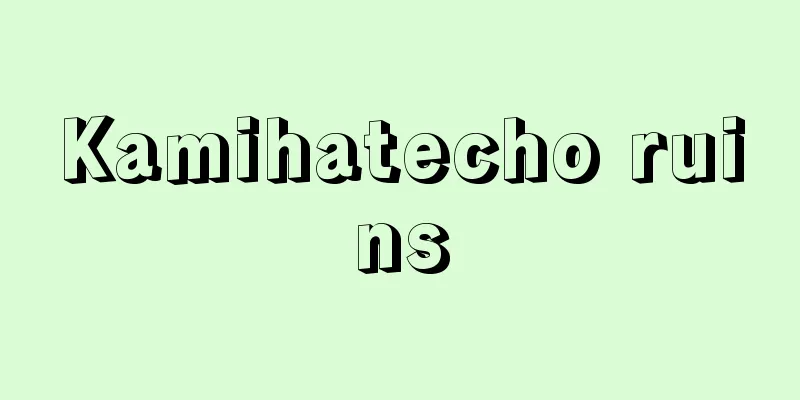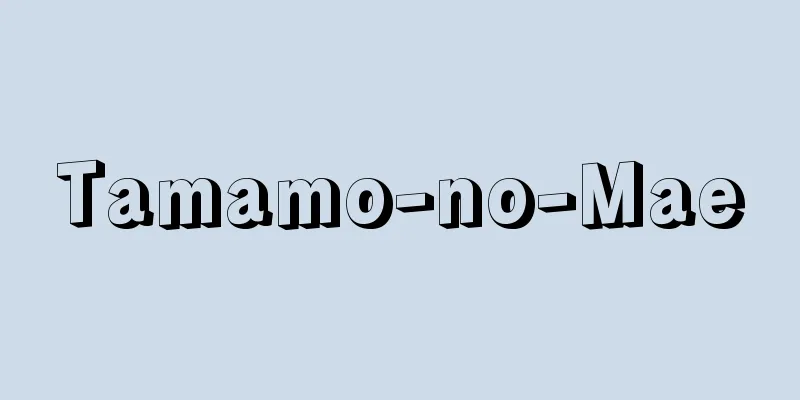Modern armor - Touseigusoku
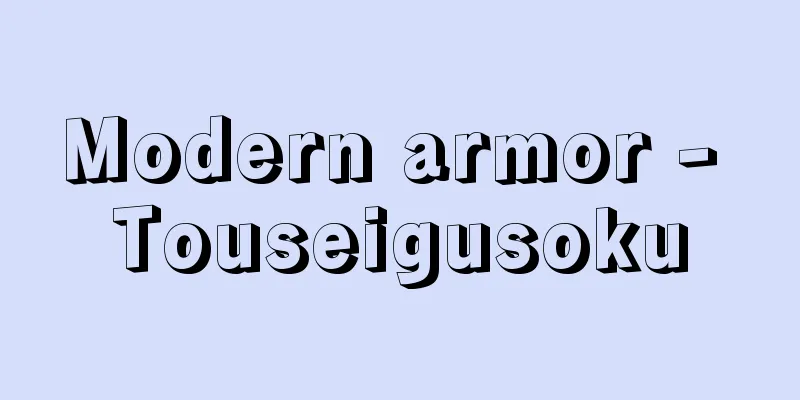
|
A style of Japanese armor used in the early modern period. It is considered to be the final stage of historical development of armor worn during the samurai period, and is considered to be heavy armor. At the end of the Muromachi period, medieval armor rapidly declined due to the intensification of warfare, the development of castles due to their expansion, the popularity of striking weapons such as spears and naginata, and the introduction and spread of firearms, and a new style of armor was devised. It is thought to have been established in the early early modern period, and at the time this was called "gusoku." Basically, it follows the style of medieval domaru, and its distinctive feature is that, in order to completely cover and protect the body, small armor is intentionally made to be integrated with the helmet and torso, and is made exclusively for them, and the cotton-clad parts of the torso are provided with a trap with a buckle to hold the gauntlet. Sleeves were abolished or reduced in size, reflecting the fighting style of standing on one foot and striking the opponent. The original meaning of "gusoku" was "equipped with" items, and in the Middle Ages, the three items of helmet, torso, and sleeves were combined with small armor such as a throat ring, gauntlets, shoulder guards, and shin guards to be called "gusoku." However, it is thought that the term "tosei" was added to the name of the modern era, meaning small armor that functions in the modern era. The creation of tosei gusoku was greatly influenced by the cultural artifacts of the Nanban region that were introduced at the time, especially guns, Nanban gusoku (Western armor), and materials such as rasha, velvet, leather, and tusks and horns. The torso of modern armor was often made of iron or leather boards bound or riveted in a horizontal seam, vertical seam, or iron plate hammered out to create a strong, standing torso with no bending or stretching. Kozane-made torsos became less common, but were still used for jote-style torsos, and Iyozanenui nobekawatsumi torsos were also popular. Torsos made of boards often had hinges for ease of putting on and taking off. Torsos that can be divided into two pieces, front and back, by a hinge on the left side are called two-piece torsos, and torsos that can be divided into five pieces by hinges on the four corners are called five-piece torsos. Yokohagi do and kozane made do have three tiers in the front, four in the back, and five on the long side, one tier more than medieval domaru. Kusazuri, also called gesan, is usually seven ken and five tiers long, but early ones were relatively common with six ken and four tiers, and even eight ken long. The yurugiito, which is attached to the torso, became longer due to the way it was worn to reduce the weight of the armor. Watakami came to be made of iron, and stand-up collars, small fins, and shoulder pads were invented to protect the neck and shoulders, and imported rasha and velvet were used for these. The takahimo, which connects the front and back torsos, is characterized by passing over the watamami, and buffalo horn was often used for the buckles. A gattari (fitting) and a machiuke (support) are provided on the back of the body, and a ukezutsu (support tube) is used to set up the sashimono (joints). The surface of modern armor was often gold rust, wrapped in leather and lacquered, and even those using dazzling fur mainly used black or navy blue threads in dull colors, making them less colorful and decorative than the beautiful and dazzling armor of the Middle Ages. New methods of decoration were devised, and armor was created that used gold and silver leaf, polished sandalwood, lacquerware, inlay and embossed patterns. Helmets were also redesigned and became what are known as modern helmets. In addition to shaped helmets such as the peach-shaped, shii-shaped, and conch-shaped helmets made by hammering out steel plates to resemble things, the practical Hinenozu-nari and Ecchu-shaped helmets were prized, and unusual and eye-opening, novel designs such as the long eboshi hat, catfish tail, goshi, Mt. Fuji, and Ichinotani helmets, which were made by hanging a harinuki (hanging helmet) on a crude iron bowl, became popular. The suji helmet with 62 bays on a gold rusted background and the star helmet with 62 bays with small stars were also popular. The standing objects were divided into front pieces, head pieces, side pieces, and rear pieces, and were carved in a variety of designs based on astronomy, faith, auspiciousness, utensils, plants and animals, etc. Each domain employed armor makers, famous or unknown, such as Haruta and Myouchin, and had them produce armor in their castle towns, which revealed the unique characteristics of the domain as well as the armor makers' styles. After the Shimabara Rebellion, wars ceased, and the political situation became completely stable from the Kanbun to Genroku eras. The hedonistic mood of the time, when people were celebrating peace, was reflected in military equipment, and armor, which was originally intended for practical use, began to be given a more dignified look and was decorated. Furthermore, influenced by the revival of armor, which became the style of medieval armor, contemporary armor broke with the style and was decorated with unnecessary devices, intricate techniques, and extravagant decorations, resulting in armor that was far from practical. [Motoo Yamagishi] [Reference] |Late 18th century - 19th century (Collection of the Metropolitan Museum of Art ) Modern armor Source: Shogakukan Encyclopedia Nipponica About Encyclopedia Nipponica Information | Legend |
|
近世に用いられた日本甲冑(かっちゅう)の一様式。武家時代の甲冑が、その沿革史上発達の最終段階に到達した重武装の甲冑と位置づけられる。室町末期、戦乱の激化、拡大に伴う城郭の発達、槍(やり)や長刀(なぎなた)などの打物(うちもの)戦の流行、鉄砲の伝来と普及などにより、中世の甲冑は急速に衰退し、新形式の甲冑が考案された。近世初頭の成立と考えられるが、当時これを「具足」と称した。基本的には、中世の胴丸(どうまる)の様式を踏襲するもので、その特色は、体をすきまなく覆い包んで防護する志向から、意図的に小具足を兜(かぶと)と胴と一体に、それに専用のものとしてつくり、胴の綿噛(わたがみ)には籠手(こて)を懸(か)け合わせる鞐(こはぜ)つきのワナ(乳(ち))が設けられる。袖(そで)は徒立(かちだち)の打物戦を反映して廃止あるいは縮小した。 具足とは、元来物の具(そな)わる意で、すでに中世に、兜、胴、袖の三(み)つ物(もの)に喉輪(のどわ)、籠手、佩楯(はいだて)、臑当(すねあて)などの小具足を添えて具足と称しているが、近世の具足は、今の世、すなわち当世に機能する小具足皆具(かいぐ)の甲冑の意をもって、当世の語を冠してよばれたものと考えられる。当世具足の成立にあたっては、おりから伝来した南蛮の文物、とくに鉄砲、南蛮具足(西洋甲冑)およびラシャ、ビロード、皮革、牙角(げかく)などが大きな影響を与えた。 当世具足の胴は、鉄や革の板札(いたざね)を革綴(かわとじ)あるいは鋲留(びょうどめ)した横矧(よこはぎ)胴、縦矧胴、鉄板の打出(うちだし)胴など堅固で足掻(あが)き(屈伸)のない立胴(たてどう)式が多く、小札(こざね)製は少なくなったが上手(じょうて)のものに行われ、また伊予札縫延革包(いよざねぬいのべかわづつみ)胴も好まれた。板物製は着脱の便から蝶番(ちょうつがい)を設けることが多い。左脇(わき)の蝶番によって胴が前後の2枚に分かれるものを二枚胴、四隅に設けた蝶番によって5枚に分かれるものを五枚胴と称する。横矧胴や小札製は立挙(たてあげ)前三段、後四段、長側(ながかわ)五段と、中世の胴丸より各一段多い。草摺(くさずり)は下散(げさん)ともよび七間五段下がりを普通とするが、初期のものには六間四段下がりが比較的多く、八間もあり、胴に威(おど)しつける揺糸(ゆるぎいと)は、具足の負担重量を軽減する着用法から長くなった。綿噛は鉄製となり、首や肩を保護するために立襟(たてえり)、小鰭(こひれ)、肩当(かたあて)の考案があり、これに舶来のラシャ、ビロードが利用された。前胴と後胴を懸け合わせる高紐(たかひも)は、綿噛の上を懸け通すのを特色とし、鞐には水牛の角が多く用いられた。胴の背面に合当理(がったり)と待受(まちうけ)を設け、これに受筒(うけづつ)を利用して指物(さしもの)を立てた。 当世具足の表面は、金錆地(かなさびじ)、革包み、漆塗りにしたものが多く、威毛(おどしげ)を用いたものも、黒糸・紺糸などじみな色調を主としたため、威色目(おどしいろめ)の美麗な中世甲冑に比較して色彩感が乏しくなり装飾性を低下したので、新たな加飾法がくふうされ、金銀箔(はく)押し、白檀磨(びゃくだんみが)き、蒔絵(まきえ)、象眼(ぞうがん)、文様の打ち出しなどをもって装飾されたものを生じた。 兜も一新されて、いわゆる当世兜となった。鉄板を打ち出して事物をかたどった桃形(ももなり)、椎形(しいなり)、法螺貝形(ほらがいなり)などの形兜(なりかぶと)のほか、実用的な日根野頭形(ひねのずなり)、越中(えっちゅう)頭形が賞用され、珍奇人目を驚かす斬新(ざんしん)な造形の長烏帽子(えぼし)、鯰尾(なまずお)、合子(ごうし)、富士山、一の谷などの張貫(はりぬき)を粗製の鉄鉢に張り懸けた張懸兜(はりかけかぶと)が流行し、筋(すじ)兜は金錆地の六十二間、星兜も小星の六十二間が好まれた。立物(たてもの)は、前立、頭立(ずだて)、脇立、後立の別を生じ、天文、信仰、吉祥、器物、動植物などに由来するさまざまのものが造形された。各藩では、春田(はるた)、明珍(みょうちん)をはじめ有名無名の具足師を召し抱え、その城下において製作させたので、具足師の流儀とともに藩独自の特色も示された。 島原の乱以降、戦争はやみ、政情のまったく安定した寛文(かんぶん)から元禄(げんろく)のころになると、泰平謳歌(おうか)の享楽的な世相が武具にも反映され、元来、実用を旨とした甲冑に威儀化の風がおこって加飾されることとなった。さらに、中世甲冑の様式になる復古調の甲冑の影響を受け、当世具足は様式を崩し、無用の装置や技巧と贅(ぜい)を尽くした装飾を施し、実用にはほど遠いものを生じることになった。 [山岸素夫] [参照項目] |18世紀後半~19世紀メトロポリタン美術館所蔵"> 当世具足 出典 小学館 日本大百科全書(ニッポニカ)日本大百科全書(ニッポニカ)について 情報 | 凡例 |
>>: Control Committee - Toseikai
Recommend
Imagawa Ujizane
[Born] Tenbun 7 (1538) [Died] December 28, 1614 (K...
Konigrätz (English spelling)
...His son Rudolf, who was to succeed him to the ...
Azetouna - Azetouna
A perennial plant of the Asteraceae family (APG c...
Aum Shinrikyo Incident
A series of incidents caused by a new religious s...
Kyoto [City] - Kyoto
Kyoto City occupies the southern part of Kyoto Pre...
Historical School - rekishigaku is (English spelling) historische Schule German
The orthodox school of economics in Germany at th...
agitation mill
…The centrifugal mill has the same high grinding ...
Cibinium
...After World War II, the socialist government e...
Sendust
One of the high-permeability alloys among magnetic...
American Blue
… [Short-haired breed] Carthagean (Carthage cat, ...
Boundary layer
All fluids have viscosity. When an object is plac...
Arabian tahr
It is a member of the Bovidae family of the Mamma...
Skoda [company] - Skoda
The largest company in the Czech Republic, a compr...
Outcrop - Roto
This refers to places where strata or rocks are e...
Thomas, E. Donnall
Born March 15, 1920 in Mart, Texas [Died] October ...
